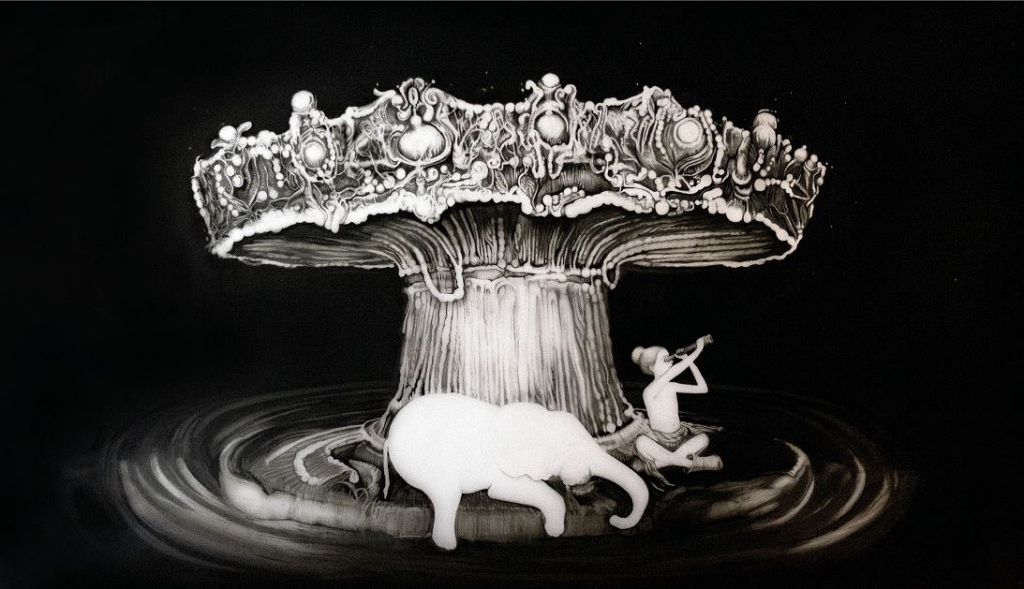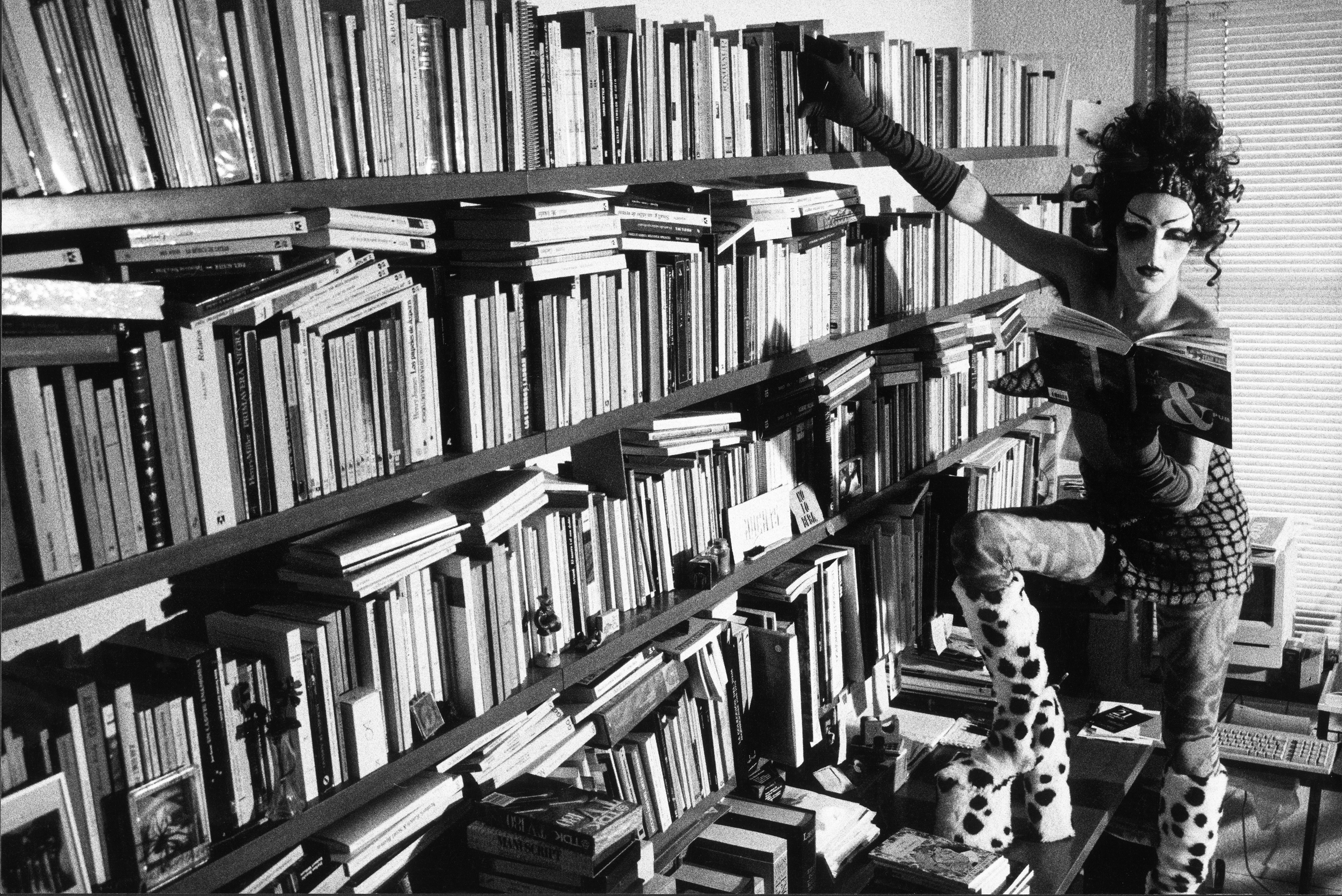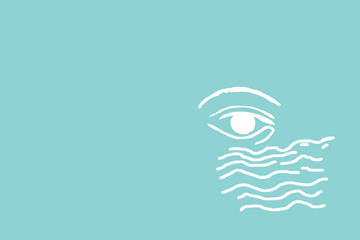Curated by escuelita with David Bestué
With the participation of: Manuel Asín, Ángel Bados, David Bestué, Rubén Grilo, María Langarita and Víctor Navarro, Mario Montalbetti, Julia Morandeira, Lucia C. Pino, Manuel Segade, and others to be confirmed.
What does worlding the world mean? Worlding, in short, refers to practices that interlace materiality and semiotics, in which the subject and ground are fused in a continuous weft. It is a noun turned into a verb, to underscore that it is an active (ontological) process; that, rather than a mental figure, it is a relentless form of embodied production. In addition it is also a proposal based on our gesture of basely translating the English neologism ‘worlding’ into Spanish as ‘mundanizar’, thus invoking the gestures of a familiar, modest, mundane form of doing. An invitation to imagine possible forms of addressing the world familiarly.
As opposed to the uncontrolled dematerialisation of the digital image and its violent consequences explored in the previous edition, the working space of this year’s Image Symposium is the rematerialisation of visual thinking: today, the urgency is the adscription to practices that make a world. Practices that promiscuously explore the spectrum of disciplines and redefine the visual in its overflows, understanding that every encounter implies connection and intersection, and therefore, paying special attention to its forms of articulating the world. Donna Haraway summed it up as follows in her Staying with the Trouble: “It matters what matters we use to think other matters; it matters what stories we tell to tell other stories; it matters what knots knot knots, what thoughts think thoughts, what descriptions describe descriptions, what ties tie ties. It matters what stories make worlds, what worlds make stories.”
Bearing this in mind, this symposium wishes to inspire new ways of naming that are also ways of doing: ways of worlding the world that are already happening and for which we could reconstruct a selective tradition that outlines them in a genealogy situated in the contemporary space of cultural production in Spain. Today the conventional visual image is exceeded, not by its sign, as happened in the eighties, but by the disappearance of the image in various forms of baroque embodied excess. This semiotic and textual excess has led in recent decades to an excess of form (as palpable, for instance, in the deconstructive architectural movement) which, at once, has led to writers, artists and architects shifting their interest to aspects that re-connect with the details and the material proper to each way of doing: the poet Mario Montalbetti defines poetry as a context of resistance against the visual, the sculptor Lucía C. Pino defends the wide range of (physical, symbolic, political, narrative, speculative and other) connotations housed in the specific use of materials, and architects like Langarita and Navarro work with temporal notions when they distinguish between Bust and Pelt.
Following these positions, these three days will be a space for encounter and intersection between various forms of production that counteract the overwhelming virtuality and reproduction of images today. Instead, they propose thinking about their articulations in presence, in their forms of being and making worlds, and so give them back a specifically worldly language, flesh and place.
The IMAGE SYMPOSIUM is a programme dedicated to collective reflection on the theory and practice of visual cultures which is celebrating its first 25 years in 2018. It takes place over three days within the framework of a forum of debate, comprising a symposium and an open call for projects. The three thematically defined and interconnected days include a visit to the urban residues management plant in Valdemingómez.
LECTURES
THURSDAY 18 OCTOBER 17:00 - 20:30. Seeing / Saying World. It is generally accepted that our perception of reality is shaped by language and how it is used and produced. Investigating the potential of creating signifieds and articulating their signifiers —their concretion, phase-lags, knots— therefore involves forms of making worlds. The first day of the symposium examines the relationships woven by language—and more specifically the language of poetry—with visuality and contemporary art, with the purpose of exploring the ways in which the notions and strategies applied by linguists and poets can be implemented within the field of art.
17:00 Introduction to XXV Image Symposium by Julia Morandeira and Manuel Segade
17: 30 David Bestué. Give Meaning. In this lecture I wish to look at the relationships between matter and language through my own works and through references to the work of poets, linguists, artists and architects. The point of departure is the need of each era to construct meaning and the difficulty today of working with the symbolic, which has lost value to the utilitarian. During this process, language has become too pragmatic and instrumental and the word has lost ambiguity. This situation excited my interest in working with the idea of matter, over and above form. Matter is always in motion: when History moves on, when the original use of an object is no longer known, the matter remains, like an anchor to the present. I like this quality because it represents a triumph of the concrete and specific over the abstract in a time like the present, in which there is an increasing investment in virtuality and a growing degradation of the concept of reality.
David Bestué is an artist and curator of the XXV Image Symposium. As an artist he has exhibited his work in Realismo, at La Capella (Barcelona, 2014), La España Moderna in García Galería (Madrid, 2015) and ROSI AMOR, at Museo Reina Sofía (Madrid, 2017), among others. He has penned a book on Enric Miralles (Enric Miralles a izquierda y derecha, 2010) and on the recent history of architecture and engineering in Spain (Formalismo Puro, 2011 and Historia de la fuerza, 2017).
18:30 Mario Montalbetti. The Limit of the Poem. What I wish to consider in this lecture is the radical gap between saying and seeing. For reasons I will explain during my lecture, I will confine my scope to the poem. The main idea is the following: the limit of the poem is not the unsayable, because, after all, the unsayable is part of the sayable. We are always saying what cannot be said, as if the unsayable were a parasite which is too small to be seen through the lens of language —but which “is there” nonetheless. Nor is silence a limit because silence is also an invention of what we say; silence always follows a having-said. The thesis then is that the limit of the poem, the limit of the sayable, it not the unsayable but the visible in an absolute sense. And that is possible if we accept the radical blindness of the poem.
Mario Montalbetti is Professor of Linguistics at Pontificia Universidad Católica del Peru. His poetry has been complied in Lejos de mí decirles (Aldus, Mexico 2013). His recent publications include an essay on Blanca Varela, El más crudo invierno (FCE, Lima 2016) and the collection of poems Notas para un seminario sobre Foucault (FCE, Lima 2018).
19:30 Debate moderated by Manuel Asín. Manuel Asín is the coordinator of the film department at Círculo de Bellas Artes de Madrid and is a programmer for MNCARS, CCCB, SEFF, etc. He has published articles in Trafic, Concreta and Caimán, and he sits on the editorial board of this last-named journal. He has co-authored Desde Shakespeare (Calambur, 2017) with José Antonio Escrig and he ran the Intermedio publishers from 2010 to 2015. He also lectures at EQZE (Tabakalera, San Sebastián) and the Master LAV (Madrid).
FRIDAY 19 OCTOBER 12:00 - 14:00 & 17:00 - 20:30. Neo-baroque, neobarroso, neobarroso. The second day of the Image Symposium focuses on excess —material, formal, textual and in meaning— from a historical perspective, through a visit to the municipal waste management centre and two specific case studies. The first is the concept of Neo-Baroque, championed in art practice and art history during the nineties by authors like Severo Sarduy, José Luis Brea and Néstor Perlongher, among others. The second is the Deconstructivism architecture movement, derived largely from the impact of the work of the philosopher Jacques Derrida in the eighties, which gave rise to a purely formalist and spectacular style. Both cases demonstrate how positions underpinned by philosophical and political approaches—the result of epochal complexity—end up igniting texts, works and constructions.
12:00 Visit to the Valdemingómez Technology Park. The Las Dehesas waste treatment centre at the Valdemingómez technology park, designed by the Ábalos y Herreros architects studio between 1996 and 2000, is the place where urban waste from Madrid is sorted and processed. The visit wishes to question how we can compost an art practice and a future from the destruction and management of the abundance of waste material produced in the present.
The visit will last two hours, from 12:00 to 14:00. As the plant is not accessible by public transport, a bus will be available for participants who have signed up beforehand, which will leave CA2M at 11:15.
17:00 Critical session with Lucía Jalón. Learning to navigate the underground, playing with darkness. Trial and error towards a new architectural image.
18:00 Manuel Segade. After the Empty Ceremony, After so much Death. In the eighties, the geopolitical South introduced a thinking that defended the Neo-baroque as an exuberance of the sign speaking of itself, as a modality of excess that threatened conventional symbolic orders. Thinkers like Néstor Perlongher (Argentina) or Severo Sarduy (Cuba) and artists like Pepe Espaliú (Spain), wrote in a race against time while the AIDS crisis advanced all around them. If contemporary art is a selective tradition, the present must be inscribed in a genealogical guideline for which there are words that have not been handed down to us: an eminently baroque work of mourning with which to understand art practices as an unstoppable epidemic, as a space of proliferation of signs in bodies, and vice versa.
Manuel Segade is the director of CA2M and curator of the XXV Image Symposium. His doctoral research focused on a revision of theatricality and allegorical linguistic structures in 1980s sculpture through the work of Juan Muñoz. Since 1998 he has been working with fragments of a cultural history of late-nineteenth century aesthetic practices, centred on the production of somatic and sexualised subjectivity (Narciso fin de siglo, Melusina, 2008). His latest projects explore gestural approaches to curating and other forms of discursive distribution.
19:00 Session to be confirmed
20:00 Debate moderated by David Bestué and Julia Morandeira
SATURDAY 20 OCTOBER 11:00 - 14.30. Making Object. Addressed from art practice and from a speculative yearning, the third and final day of the Image Symposium poses questions on how the image makes worlds through art. For some time now many artists have been working with a mundane and colloquial practice, counteracting spectacularisation through an affective, subjective and critical making. Here we will propose a rethinking of the object and the making of the object, a conversation on and from sculpture, understood as presence more than as image and which introduces discursive tools associated with linguistics and matter.
11:00 Critical session with Delas
12:00 Ángel Bados in conversation with Lucía C. Pino and Rubén Grilo. Ángel Bados, (let me do it) …… Perhaps it might be enough to distinguish the phenomenal quality of the countenances of the digital, which, after all, sustain our gaze, from those other images that, while affecting us corporally, manage to connect us symbolically with what refuses to be said. But it is not easy.
Even knowing the fascinating power of some countenances, and even if art production that was not matter-based were unthinkable, because the very active edification of our representations depends on it, our everyday work shows us that matter is more silent and opaque, and outside of meaning. And that it undermines structure. This means that the closure of meaning becomes highly improbable, unless we admit that, alongside an effort at saying the right thing, there is a parallel yearning for gratification. And it would be precisely there, in the intersection of the course of signification with the flow of desire—which “is without object”–where, perhaps, what is beyond meaning can knot itself as an effect of creation and of poetry.
Ángel Bados has had recent solo exhibitions at Galería Moisés Pérez de Albéniz, Madrid, in 2013, and at Carreras Múgica, Bilbao, in 2017. He is currently exhibiting work in the group show El Otro soy yo, at Koldo Mitxelena in San Sebastián. In 2017 he took part in the symposium Pensar en arte. Lo educativo como síntoma, held at the Azkuna centre in Bilbao. In June 2018 he took part in L’occasione with the slogan “Hecho con las manos”.
Lucía C. Pino, an assemblage is not a fissureless whole
1. an assemblage is not a fissureless whole
2. an assemblage is not just the sum of its parts
3. assemblages cannot be updated
4. assemblages fluctuate around attractors
5. assemblages are not firmly grounded on attractors
6. an assemblage can be a sculpture
7. the specific cryptic of the sculpture is the rehearsal of an enigma
8. an enigma can contain desire, desire is an assemblage
9. an assemblage can be a relationship
10. a sculpture can be an assemblage that can be prosthesis, which can be a moment of suspension which is an enigma.
One of my aspirations is to evince how, as humans, we are witnessing, among other phenomena, a loss of communicational or relational sensibility with otherhood as a result of textual and formal linguistic excess (and also in terms of artificial construction, including programming languages, images and big data). What I wish to invoke here with sculpture is to underscore that the relationship between matter, economy, politics, desire and critical theory is not a metaphor, analogy or exemplification. This praxis helps me to study and rehearse possible scenarios. I intuit which direction to take, one that passes through fields of learning which are often remote from me.
For me sculpture is an activity that can be understood as the place of a specific negotiation between many variables that arise in a geometric locus.
Lucía C. Pino has exhibited her work at, among others, CCCC in Valencia; at Espai 13 Fundació Miró, ASM, Ana Mas Projects, Et-hall, Galería dels Angels, MACBA and Casa Asia in Barcelona; Filmoteca Regional de Murcia Francisco Rabal; Pragda Big Screen Project, New York; Larraskito, Bilbao; Galeria Aulenti Triennale, Milan; and D/ART/ Sydney.
Rubén Grilo, Untitled. A talk on epic-free sculpture, Makitart, recybernetic, Dearest GearBest, strong poetry, representational solitude, pre-communication, prerange, RTFMtwice-ism, pretrance, infraoriginality, neo-exclusivity, infrartisan, indoor theory, algorithmic liberalism, refractory proletariat, anarcho-cynicism, environmental violence, software-driven realism, recycled violence, soft recognition, managerial figuration, managerial realism, horizontal class, low-fiction, filtrism, pseudoacceptance, commonism, prop-philosophy, anarcho-artisan, de-intentioned display, personal-tainment, studiocore, competitive poetry, critical gentrification, visual-lepsy, infrasubjects, allegorical standardisation, autoecology, networked nature, algorithmic leisure, radical gimmick, functional alienation, climatic postmodernism, cynical mechanism, mechanic cynicism, high originality, time-based conceptualism, Top-Part Art (TPA), beige art, handmade-core, downloadable wars, climatic alienation, conceptual unicity, conceptualism, democratic standardisation, infraexclusivity, sensory authorship, expressive labour, anticreativity, multicultural industrialism, narrative standardisation, LAB TURN, free reality, sustainable-core, multi-ecology, poor Pop Art, alter-simulacra, emotional unity, paradoxical-tainment, parafiguration, pseudomaterialism, weak unity, silent politics, merge-core, corporate poetry, antimechanisms, drone empowerment, para-authorship, expressive unicity, etc.
Rubén Grilo studied at University of Barcelona and at Rijksakademie van Beeldende Kunsten in Amsterdam. He has exhibited at Fundació Joan Miró (Barcelona), Nogueras Blanchard (Madrid), Hildesheim Kunstverein, V4ULT (Berlin), Union Pacific (London), CIRCA Projects (Newcastle upon Tyne), 1646 (The Hague), Supplement (London), Wilfried Lentz (Rotterdam) and MARCO (Vigo), among others.
13.30 Debate moderated by Julia Morandeira
Julia Morandeira is a researcher and curator of XXV Image Symposium. She co-directs La Escuelita at CA2M together with Manuel Segade and is a mediator in the ConComitentes project funded by Fundación Daniel y Nina Carasso in Spain. Her practice revolves around long-term curatorial projects such as Canibalia; Be careful with each other, so we can be dangerous together; Nothing is true, everything is alive; and Estudios de la Noche.
Las JORNADAS DE ESTUDIO LA IMAGEN es un programa dedicado a la reflexión colectiva en torno a la teoría y la práctica de las culturas visuales. Se desarrolla durante tres días en una estructura de foro de debate, compuesta por un seminario, talleres y una convocatoria pública de proyectos. Esta edición se estructura a través de tres jornadas (Ver / decir mundo; Neobarroco, neobarroso, neoborroso; Hacer objeto) definidas temáticamente e interconectadas entre sí. En continuidad con la propuesta, los comisarios han diseñado un dispositivo a partir de obras de la colección del CA2M y elementos expositivos del centro, buscando que encarne y resuene con los debates que aloje. También, han editado una publicación online que recoge textos claves en relación a las cuestiones que el simposio aborda, con el fin de amplificarlas.





